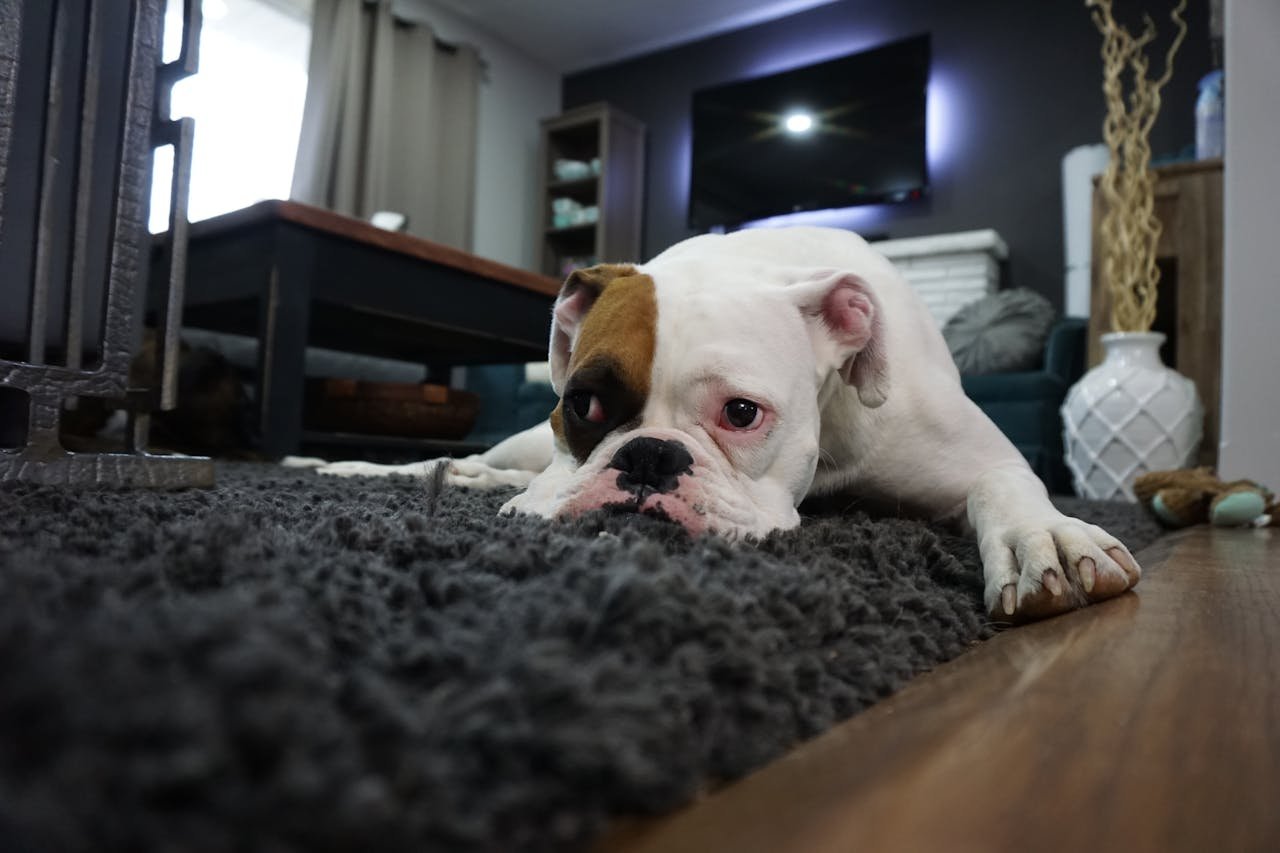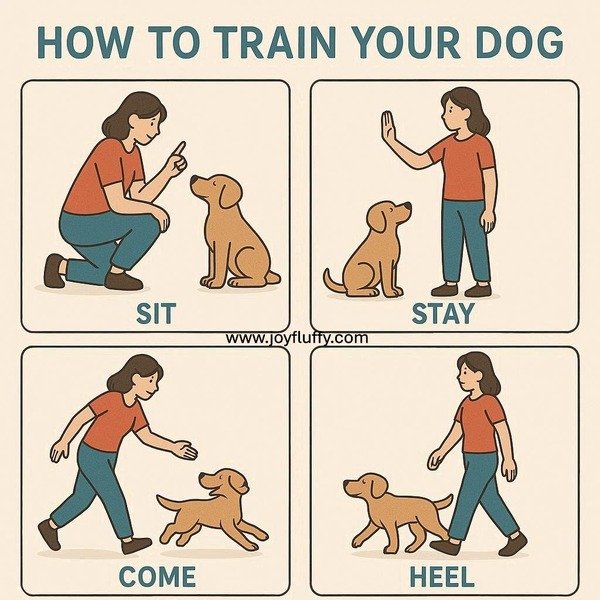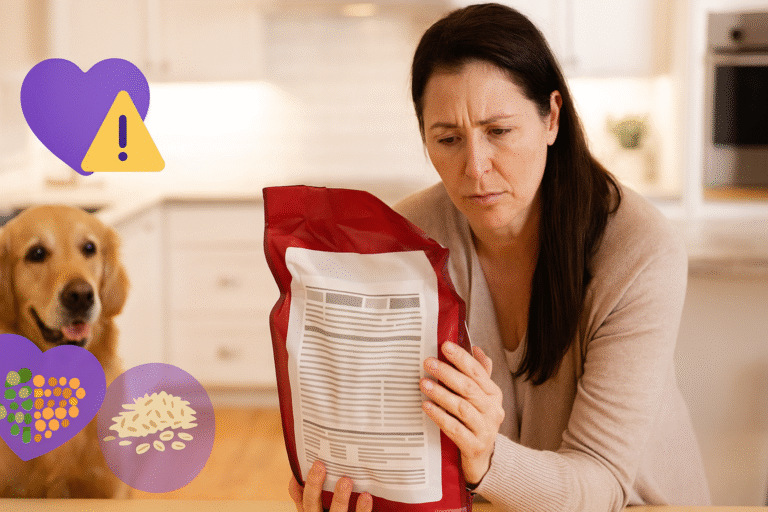Phobia of Dogs: Why It Happens and What You Can Do About It
If you break out in a cold sweat at the mere thought of encountering a dog, you’re not alone. Dog phobia, medically known as cynophobia, affects millions of people worldwide and can significantly impact daily life. Understanding why this fear develops and knowing there are effective treatments available is the first step toward overcoming this challenging condition.
Whether your fear stems from a childhood incident or developed gradually over time, the good news is that phobia of dogs is highly treatable. This comprehensive guide will help you understand the root causes, recognize the symptoms, and explore proven methods to regain control over your life.
Dog Phobia by the Numbers
7-9% of population
Dogs & Spiders
80-90%
8-12 weeks
What Is Dog Phobia (Cynophobia)?
Dog phobia, or cynophobia, is an intense, irrational fear of dogs that goes far beyond normal caution or dislike. Unlike a general preference to avoid dogs, this phobia triggers genuine panic responses that can interfere with your daily activities, social life, and overall well-being.
Key Characteristics of Dog Phobia
People with cynophobia experience overwhelming anxiety not just around dogs, but often when thinking about dogs, seeing pictures of dogs, or even hearing barking in the distance. The fear is persistent, lasting six months or longer, and causes significant distress or impairment in important areas of life.
It’s important to understand that this isn’t just being “scared of big dogs” or having a reasonable concern about aggressive animals. Cynophobia can be triggered by any dog, regardless of size, breed, or temperament – even the friendliest golden retriever puppy can trigger intense panic in someone with this condition.
The phobia exists on a spectrum. Some people can tolerate seeing dogs from a distance but panic when one approaches. Others cannot even look at pictures of dogs or watch movies featuring dogs without experiencing anxiety symptoms. Understanding where you fall on this spectrum helps determine the most appropriate treatment approach.
Why Does Dog Phobia Develop?
Understanding the root causes of your dog phobia is crucial for effective treatment. Phobias rarely develop without reason, and identifying your specific triggers can help both you and any healthcare providers create a targeted treatment plan.
Traumatic Experiences
The most common cause of dog phobia is a direct traumatic experience with a dog, especially during childhood. Our brains are designed to protect us from perceived threats, and if a dog bite, aggressive behavior, or frightening encounter occurs during our formative years, the mind may generalize this fear to all dogs.
How Trauma Creates Lasting Fear
When we experience trauma, our brain’s amygdala (the fear center) creates strong associations between the threatening situation and various cues present during the event. For dog attacks, this might include the sight of fur, the sound of barking, rapid movement, or even specific breeds that resemble the original aggressor.
These associations become so deeply ingrained that encountering any similar stimulus can trigger the same fight-or-flight response you experienced during the original trauma, even when there’s no actual danger present.
Learned Behavior and Family Influence
Children often develop fears by observing their parents’ or caregivers’ reactions. If a parent consistently shows fear or anxiety around dogs, children may internalize this response as appropriate and necessary for survival. This type of learned phobia can be just as intense as those stemming from direct trauma.
Family stories and warnings can also contribute. Repeated tales about dangerous dogs or constant warnings to “stay away from dogs” can create anticipatory anxiety that develops into a full phobia over time.
Evolutionary and Biological Factors
Some researchers believe we may be biologically predisposed to fear certain animals, including dogs, as an evolutionary survival mechanism. Throughout human history, wild canines posed genuine threats, and those who were appropriately cautious were more likely to survive and pass on their genes.
Additionally, some people have a genetic predisposition to anxiety disorders in general, making them more susceptible to developing specific phobias like cynophobia.
Lack of Early Exposure
Growing up without positive exposure to dogs can also contribute to phobia development. When we don’t learn appropriate ways to interact with dogs during childhood, they remain unknown and potentially threatening. This unfamiliarity can evolve into fear, especially if the first significant exposure occurs during a stressful or negative situation.
Recognizing the Symptoms of Dog Phobia
Dog phobia manifests through a combination of physical, emotional, and behavioral symptoms. Understanding these symptoms helps differentiate between normal caution and a clinical phobia that may require professional intervention.
Physical Symptoms
• Sweating or excessive perspiration
• Trembling or shaking
• Shortness of breath or hyperventilation
• Dizziness or feeling faint
• Nausea or stomach upset
• Feeling of choking or throat tightness
• Hot or cold flashes
• Muscle tension or rigidity
• Headaches from stress
• Sleep disturbances
Emotional and Psychological Symptoms
The emotional impact of dog phobia extends beyond the immediate fear response. Many people experience overwhelming feelings of helplessness, embarrassment, or frustration about their inability to control their fear. This can lead to a cycle of anxiety about having anxiety – worrying about encountering dogs and how you might react.
Expert Insight: The Anticipatory Anxiety Cycle
Dr. Sarah Mitchell, a clinical psychologist specializing in anxiety disorders, explains: “Many people with cynophobia spend considerable mental energy scanning their environment for potential dog encounters. This constant vigilance actually increases overall anxiety levels and can make the phobia worse over time.”
The anticipatory anxiety – fear of the fear itself – often becomes more debilitating than the actual encounters with dogs. This creates a self-reinforcing cycle that can significantly impact quality of life.
Behavioral Changes and Avoidance
People with dog phobia often develop elaborate avoidance strategies that can significantly limit their daily activities:
- Route Planning: Choosing walking or driving routes to avoid areas where dogs might be present
- Social Limitations: Declining invitations to homes with dogs or outdoor events where dogs might be present
- Exercise Restrictions: Avoiding parks, hiking trails, or outdoor activities due to fear of encountering dogs
- Career Impact: Avoiding jobs that might require interaction with dogs or their owners
- Housing Choices: Selecting neighborhoods or housing based on perceived likelihood of dog encounters
The Impact on Daily Life
Dog phobia can significantly affect various aspects of your life, often in ways that might not be immediately obvious to others. Understanding these impacts helps validate your experience and underscores the importance of seeking treatment.
When Dog Phobia Becomes Debilitating
If your fear of dogs is preventing you from normal activities like walking in your neighborhood, visiting friends, or enjoying outdoor spaces, it’s time to consider professional help. The phobia becomes particularly concerning when:
- You experience panic attacks at the thought of encountering dogs
- You’ve had to change your lifestyle significantly to avoid dogs
- The fear is affecting your work, relationships, or social life
- You experience physical symptoms even when just thinking about dogs
- You avoid leaving your home due to fear of dog encounters
Social and Relationship Effects
Dog phobia can strain relationships, especially in a society where dog ownership is common and dogs are often considered family members. Friends and family may not understand the intensity of your fear, leading to frustration on both sides. You might feel pressured to “just get over it” or face judgment for your reactions.
Dating and romantic relationships can be particularly challenging if potential partners own dogs or if social activities frequently involve dog-friendly environments. The fear can also affect family dynamics, especially if other family members want a dog or if children in the family are exposed to your fearful reactions.
Professional and Educational Limitations
Certain careers may seem off-limits due to dog phobia, including veterinary work, dog training, mail delivery, or jobs requiring home visits. Even seemingly unrelated careers can be affected – for example, if work-related events or team-building activities involve outdoor settings where dogs might be present.
Professional Treatment Options
The good news about dog phobia is that it responds very well to professional treatment. With the right approach and commitment to the process, most people can significantly reduce their fear or overcome it entirely. Here are the most effective professional treatment methods:
Evidence-Based Treatment Approaches
Cognitive Behavioral Therapy (CBT)
CBT is considered the gold standard for treating specific phobias like cynophobia. This approach helps you identify and challenge the negative thought patterns that fuel your fear while developing practical coping strategies.
During CBT sessions, you’ll learn to recognize catastrophic thinking patterns (like assuming every dog will attack) and replace them with more realistic assessments. You’ll also develop a toolkit of techniques to manage anxiety when encounters do occur.
Exposure Therapy
Systematic exposure therapy involves gradual, controlled exposure to dogs in a safe, therapeutic environment. This process helps desensitize your fear response over time.
The process typically starts with less threatening exposures (looking at pictures of dogs) and gradually progresses to more challenging situations (being in the same room as a calm, well-trained therapy dog). The pace is always controlled by you and your therapist.
EMDR (Eye Movement Desensitization and Reprocessing)
If your dog phobia stems from a specific traumatic incident, EMDR can be particularly effective. This therapy helps process traumatic memories so they no longer trigger intense emotional responses.
EMDR has shown excellent results for trauma-based phobias and can often produce significant improvement in fewer sessions than traditional talk therapy.
Medication Support
While medication alone rarely cures phobias, it can be helpful in conjunction with therapy, especially if you have severe anxiety symptoms or panic attacks. Anti-anxiety medications or beta-blockers might be prescribed for specific situations or to help you engage more effectively in therapy.
Always consult with a healthcare provider about medication options, as they can assess whether medication might be beneficial for your specific situation.
Self-Help Strategies and Coping Techniques
While professional treatment is often necessary for severe dog phobia, there are several self-help strategies that can complement therapy or help manage milder fears. These techniques can also be valuable for maintaining progress after completing formal treatment.
Immediate Coping Strategies
Deep Breathing Techniques: When you encounter a dog or feel anxiety building, focus on slow, deep breathing. Try the 4-7-8 technique: inhale for 4 counts, hold for 7, exhale for 8. This activates your body’s relaxation response and can prevent panic from escalating.
Grounding Exercises: Use your five senses to stay present when fear strikes. Name 5 things you can see, 4 things you can touch, 3 things you can hear, 2 things you can smell, and 1 thing you can taste. This technique helps prevent your mind from spiraling into worst-case scenarios.
Progressive Muscle Relaxation: Practice tensing and releasing different muscle groups to reduce physical tension associated with fear. Start with your toes and work your way up to your head, holding tension for 5 seconds then releasing for 10 seconds.
Gradual Self-Exposure Techniques
If you’re ready to begin challenging your fear independently, start with very small steps. Remember, the key is to go slowly and never overwhelm yourself. If any step feels too difficult, take a step back to something more manageable.
Step-by-Step Self-Exposure Plan
Important Self-Help Guidelines
Remember that self-exposure should never replace professional treatment for severe phobias. If you experience panic attacks, have suicidal thoughts, or find that your attempts at self-help are making your fear worse, seek professional help immediately.
Progress isn’t always linear – you might have good days and bad days. This is completely normal and doesn’t mean you’re failing. Be patient and compassionate with yourself throughout the process.
Understanding Dog Behavior
One of the most empowering aspects of overcoming dog phobia is learning to read canine body language and understand normal dog behavior. Much of our fear comes from unpredictability – when we can better predict how a dog might behave, the fear often diminishes.
Signs of a Calm, Friendly Dog
Body Language: Relaxed posture, loose and wiggly body movement, play bow (front end down, rear end up), soft eyes, mouth slightly open in a “smile”
Tail Signals: Wagging at mid-level or lower, broad sweeping motions, whole body wiggling along with the tail
Approach Behavior: Curved approach rather than direct, sniffing the ground, looking away periodically, responding to their owner’s commands
Warning Signs to Be Aware Of
Learning to recognize signs of stress or aggression in dogs can help you make informed decisions about when to maintain distance. However, it’s important not to let this knowledge increase your anxiety – most dogs you encounter will be friendly and well-socialized.
- Stiff body posture: Rigid stance, hackles raised, direct staring
- Aggressive signals: Growling, showing teeth, snapping, lunging
- Fearful behavior: Cowering, excessive panting, trying to hide behind owner
- Overstimulation: Jumping excessively, not responding to owner, fixated on something
Remember, even dogs showing these signs aren’t necessarily dangerous – they might just be stressed, overstimulated, or poorly trained. Most can be easily avoided by giving them space and not attempting interaction.
Building Long-Term Confidence
Overcoming dog phobia isn’t just about eliminating fear – it’s about building lasting confidence and developing healthy relationships with dogs if you choose to do so. This process takes time and patience, but the results can be life-changing.
Strategies for Long-Term Success
Practice Regular Exposure
Once you’ve made initial progress, maintain it through regular, controlled exposure to dogs. This might mean taking walks in areas where you’ll see dogs, visiting dog-friendly establishments, or spending time with friends who have well-behaved dogs.
Consistency is key – irregular exposure can sometimes lead to regression, while steady practice helps maintain your progress and builds confidence over time.
Develop Positive Associations
Work on creating positive associations with dogs by pairing dog encounters with enjoyable activities. This might mean treating yourself to a favorite coffee after successfully walking past a dog park, or practicing exposure exercises in beautiful, relaxing settings.
Over time, these positive associations can help rewire your brain’s response to dogs, making encounters feel less threatening and more neutral or even pleasant.
Consider Volunteer Opportunities
Once you’ve made significant progress, volunteering at animal shelters (in non-dog roles initially) can help normalize your relationship with dogs while contributing to a good cause. Many shelters need help with administrative tasks, cat care, or fundraising that doesn’t require direct dog contact.
As your comfort grows, you might gradually take on roles with more dog interaction, always at your own pace and comfort level.
When to Seek Professional Help
While self-help strategies can be valuable, certain situations warrant professional intervention. Recognizing when you need additional support is crucial for effective treatment and preventing the phobia from worsening.
Red Flags: Seek Professional Help If You Experience
- Panic attacks: Intense fear accompanied by physical symptoms like chest pain, difficulty breathing, or feeling like you’re having a heart attack
- Agoraphobia: Avoiding leaving your home due to fear of encountering dogs
- Depression: Feeling hopeless, sad, or isolated due to limitations caused by your phobia
- Substance use: Using alcohol or drugs to cope with anxiety about dogs
- Relationship problems: Your phobia is causing significant strain in personal or professional relationships
- Worsening symptoms: Your fear is getting worse despite self-help efforts
- Suicidal thoughts: Any thoughts of self-harm require immediate professional intervention
Remember, seeking help is a sign of strength, not weakness. Professional therapists have specialized training and tools that can significantly accelerate your recovery process.
Finding the Right Professional
When choosing a mental health professional to help with your dog phobia, look for someone with specific experience in treating anxiety disorders and phobias. Cognitive Behavioral Therapy (CBT) specialists and those trained in exposure therapy tend to have the best success rates with specific phobias.
Don’t hesitate to ask potential therapists about their experience with phobias, their typical treatment approach, and expected timeline for improvement. A good therapist will be happy to answer these questions and help you understand what to expect from treatment.
Supporting Someone with Dog Phobia
If someone you care about has dog phobia, your support can make a significant difference in their recovery process. However, it’s important to provide support in ways that are actually helpful rather than inadvertently reinforcing the fear.
How to Be Supportive
Validate their experience: Acknowledge that their fear is real and distressing, even if it seems irrational to you. Avoid saying things like “just get over it” or “it’s not that scary.”
Don’t force exposure: Never surprise someone with dog phobia by bringing a dog around them or pushing them into situations they’re not ready for. This can worsen the phobia and damage trust.
Offer practical support: Help them find alternative routes that avoid dogs, accompany them to therapy appointments, or help research treatment options without taking over their recovery process.
Educate yourself: Learn about phobias and anxiety disorders so you can better understand what your loved one is experiencing and how to provide appropriate support.
Celebrate progress: Acknowledge and celebrate small victories, whether it’s looking at a picture of a dog without panic or successfully walking past a house with a barking dog.
Prevention: Helping Children Develop Healthy Relationships with Dogs
While not all dog phobias can be prevented, there are steps parents and caregivers can take to help children develop appropriate, healthy responses to dogs rather than fear-based reactions.
Prevention Strategies for Children
Living Successfully with Treated Dog Phobia
Recovery from dog phobia opens up many opportunities that may have been limited by fear. Many people discover that overcoming this specific fear also builds confidence in other areas of life and provides tools for managing anxiety in general.
Life After Dog Phobia Treatment
Sarah, who completed treatment for severe cynophobia, shares: “I never realized how much mental energy I was spending on avoiding dogs until I didn’t have to anymore. Now I can enjoy hiking, visit friends without anxiety, and even ended up adopting a rescue dog two years after completing therapy. The skills I learned don’t just apply to dogs – they’ve helped me manage work stress and other anxieties too.”
Successful treatment doesn’t necessarily mean you’ll become a dog enthusiast, and that’s perfectly fine. The goal is to reduce fear to manageable levels so it no longer interferes with your daily life. Some people develop neutral feelings toward dogs, while others discover they actually enjoy canine companionship.
Maintaining Progress
Like any skill, the techniques you learn for managing dog phobia require ongoing practice to maintain effectiveness. This doesn’t mean you need to seek out dog encounters, but rather that you should continue using the coping strategies you’ve developed and not completely avoid all dogs once you’ve made progress.
It’s also important to be prepared for occasional setbacks. Stressful life events, illness, or particularly challenging dog encounters might temporarily increase your anxiety. This doesn’t mean you’ve lost all your progress – it’s a normal part of the recovery process.
Conclusion: Your Path Forward
Dog phobia can feel overwhelming and isolating, but it’s important to remember that you’re not alone and that effective help is available. Millions of people have successfully overcome this fear and gone on to live fuller, less restricted lives.
Key Takeaways
Recovery is possible: With proper treatment, 80-90% of people with specific phobias like cynophobia experience significant improvement.
You have options: Whether through professional therapy, self-help strategies, or a combination of both, there are multiple paths to recovery that can be tailored to your specific needs and comfort level.
Take it one step at a time: Recovery doesn’t happen overnight, and that’s okay. Each small step forward is meaningful progress worth celebrating.
Support is available: From professional therapists to support groups to understanding friends and family, you don’t have to face this challenge alone.
The first step is often the hardest – acknowledging that the fear is impacting your life and that you’re ready to do something about it. Whether that means researching therapists, trying self-help techniques, or simply reading articles like this one, you’ve already begun the journey toward recovery.
Remember that seeking help for dog phobia isn’t just about the dogs – it’s about reclaiming your freedom to move through the world without fear limiting your choices. You deserve to live a life where anxiety doesn’t dictate your decisions, and with the right approach and support, that life is absolutely achievable.






